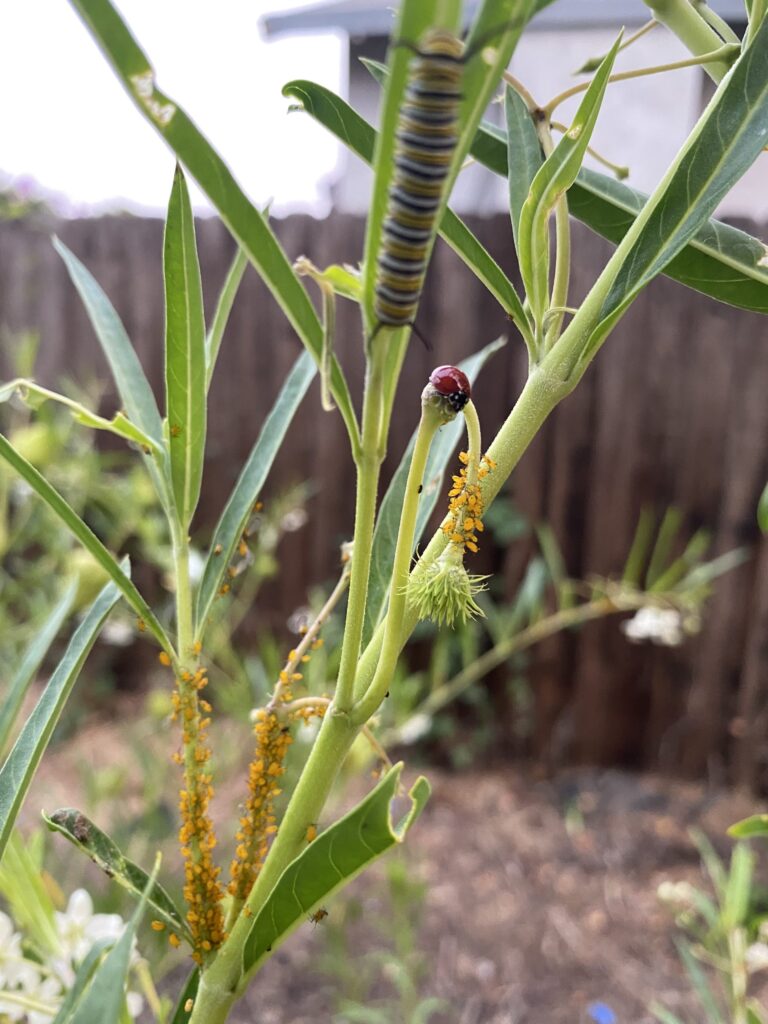Have you noticed tiny yellow/orange dots covering the stems of your milkweed? They are oleander aphids, and a heavy infestation can have serious consequences. Sometimes called “garden vampires”, they drink the sap from the plant, weakening and sometimes killing it. The life is literally sucked out of the plant, and can reduce the viable seeds produced by more than 75%. Aphids also produce “honeydew,” which ants love, but it can lead to sooty mold or other plant pathogens.
Female monarch butterflies will avoid laying their eggs on aphid-infested leaves. Aphids are avid asexual breeders and can quickly overwhelm a plant if not noticed early, so check your plants often and consider some of the following ideas for control.
- One of the easiest ways to eradicate aphids is by spraying them with a strong stream of water, either from a hose or a spray bottle. NEVER use any type of insecticidal soap nor pesticide. Support the top of the plant with your hand while directing a blast directly on them. Always check for monarch eggs and caterpillars first, and avoid them. This method also can remove any sooty residue that is on the stalk.
- For a more “hands on” approach, gently rub the insects off— use a gloved hand if you are squeamish and don’t want orange fingers. Some people report success wiping down the area with a wet cloth instead. For smaller populations, wrap a pencil in masking or packing tape and use it to catch and dispose of the offenders. Again, be sure to closely inspect for monarch eggs or caterpillars first!
- Encourage predators. Lady bugs and lacewings eat aphids, and can reduce the populations swiftly. But they also may snack on monarch eggs and larvae.
- Plant onions, society garlic, and marigolds nearby. They repel aphids and attract butterflies. A double bonus!
- Some of the more unorthodox solutions might be worth a try as well. Place thin strips of banana peel near milkweed buds and blooms — these are not appealing (!) to aphids. Use a mini keyboard vacuum cleaner to suck up the insects and dispose of them. Cut back areas of heavy infestation on your plant and throw them away in a waste can, far from your plants. Cultivate several types of milkweed in different areas of your yard— if the aphids have a clear favorite, consider sacrificing a small patch for the good of the others.
Whichever method(s) you choose, intervene early. A heavy infestation can severely affect the health of your plant and will be more difficult to control.
Sources:
How to distinguish between aphids and monarch eggs on milkweed: https://www.birdsandblooms.com/gardening/attracting-butterflies/monarch-egg-aphid/?_cmp=stf
https://www.hometalk.com/diy/grow/controlling-aphids-on-milkweed-for-monarch-butterflies-38733829
https://plantcaretoday.com/aphids-on-milkweed.html

Excellent article. Very helpful.